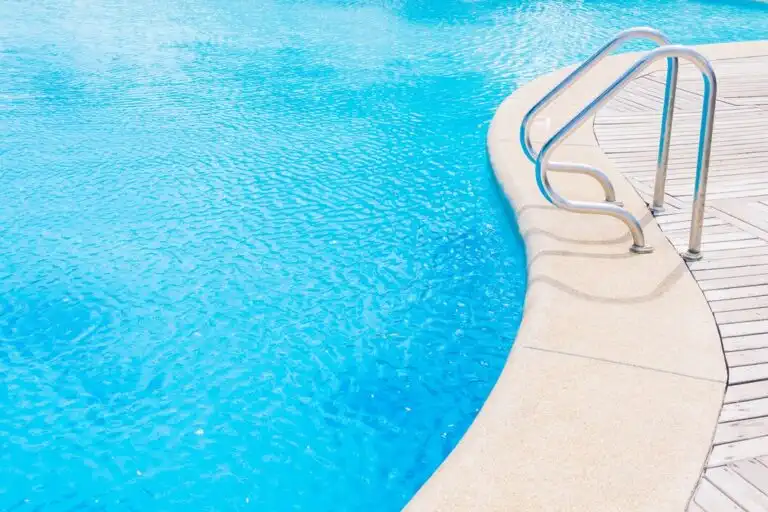Maintaining a pool requires attention to detail, and one significant aspect is knowing when to replaster. Pool replastering revitalizes the pool’s surface, ensuring it remains safe and attractive. Ignoring signs that your pool needs replastering can lead to more extensive and costly repairs down the road.
Visible Cracks And Surface Damage
Visible cracks and surface damage are clear indicators that your pool needs replastering. Over time, the plaster in your pool can develop cracks due to exposure to harsh weather conditions, fluctuating temperatures, and the natural wear and tear of frequent use. These cracks can compromise the pool’s structure, leading to more serious damage if left unaddressed.
Cracks in the plaster allow water to seep through, which can lead to the erosion of the underlying materials. This not only damages the pool but can also affect the surrounding landscape. Addressing these issues promptly through replastering can prevent structural damage and costly repairs in the future.
In addition to cracks, other surface damages like chips and flaking are signs that the plaster is deteriorating. These issues can make the surface rough and unpleasant to touch. By replastering, you restore the pool’s surface to its original smoothness, ensuring a comfortable and safe environment for swimmers.
Rough Pool Surfaces
Rough pool surfaces can cause several problems that signify the need for replastering:
- Skin Irritation: Rough patches can cause skin irritation and abrasions, making swimming uncomfortable and potentially leading to injuries.
- Increased Algae Growth: Rough surfaces provide a breeding ground for algae. This makes it harder to maintain clean and clear water, requiring more frequent cleaning and chemical treatments.
- Damage to Swimwear: Rough surfaces can snag and damage swimwear, leading to increased wear and tear on clothing.
- Uncomfortable Footing: Walking on a rough pool surface can be uncomfortable and unsafe, especially for children and elderly swimmers.
- Visual Appeal: A smooth, well-plastered surface enhances the visual appeal of the pool. Rough spots make the pool look neglected and uninviting.
Replastering addresses these issues, restoring the pool’s smooth surface and ensuring a safer, more enjoyable swimming experience. It helps maintain the pool in a condition that is both visually appealing and functionally effective.
Mineral Stains And Discoloration
Mineral stains and discoloration are strong indicators that a pool needs replastering. Over time, various minerals present in the water can build up and cause stains on the pool’s surface. These stains are often resistant to cleaning and can make the pool look dirty and uninviting.
Discoloration can also occur when the plaster erodes and exposes the underlying material. This not only impacts the visual appeal but can also indicate deeper issues with the pool’s structure. Different colors in the plaster can point to various water chemistry problems, necessitating a fresh layer of plaster to rectify these issues.
By replastering your pool, you can restore its original, clean look. Replastering removes old stains and provides a fresh, smooth surface. This enhances the pool’s appearance and ensures it remains inviting for swimmers. Addressing stains and discoloration promptly can prevent long-term damage and help maintain the value of your property.
Frequent Need For Chemical Adjustments
The frequent need for chemical adjustments in your pool water can be a sign of underlying issues that require replastering:
- Imbalanced pH Levels: Constantly needing to adjust pH levels may indicate that the pool’s plaster is deteriorating. This affects the pool’s ability to maintain balanced water chemistry, leading to frequent imbalances.
- Increased Alkalinity: High alkalinity levels that are hard to control can signal that the pool surface is degrading. This can result in mineral deposits and staining.
- Chlorine Demand: If you notice that your pool requires more chlorine than usual, it could mean the plaster is eroding, making it harder to keep the water sanitized.
- Calcium Hardness: Difficulty maintaining calcium hardness levels can indicate plaster issues. Low calcium hardness causes the plaster to weaken and dissolve into the water, leading to chalky deposits.
- Frequent Algae Blooms: Algae blooms occur more often when the pool’s surface is rough or cracked. This makes it harder for chemicals to work effectively, requiring constant adjustments.
Recognizing these signs helps in maintaining the pool’s health. Replastering improves water chemistry stability, reducing the need for frequent chemical adjustments. This ensures a more balanced and safe swimming environment.
Conclusion
Understanding the signs that your pool needs replastering helps in maintaining a safe, attractive, and functional swimming environment. Visible cracks, rough surfaces, mineral stains, and frequent chemical adjustments all indicate that it might be time to consider replastering. Each issue, if left unaddressed, can lead to more significant problems and higher costs down the line.
Our team at Matrix Construction Services specializes in renovations, maintenance, and improvements of multi-family developments, including pool replastering. Our professionals are equipped to handle all aspects of the replastering process, ensuring high-quality results.
Contact us today to learn how we can help with your pool replaster services in Houston. Our experts ensure that your pool remains in top condition, providing a safe and beautiful space for everyone to enjoy.



